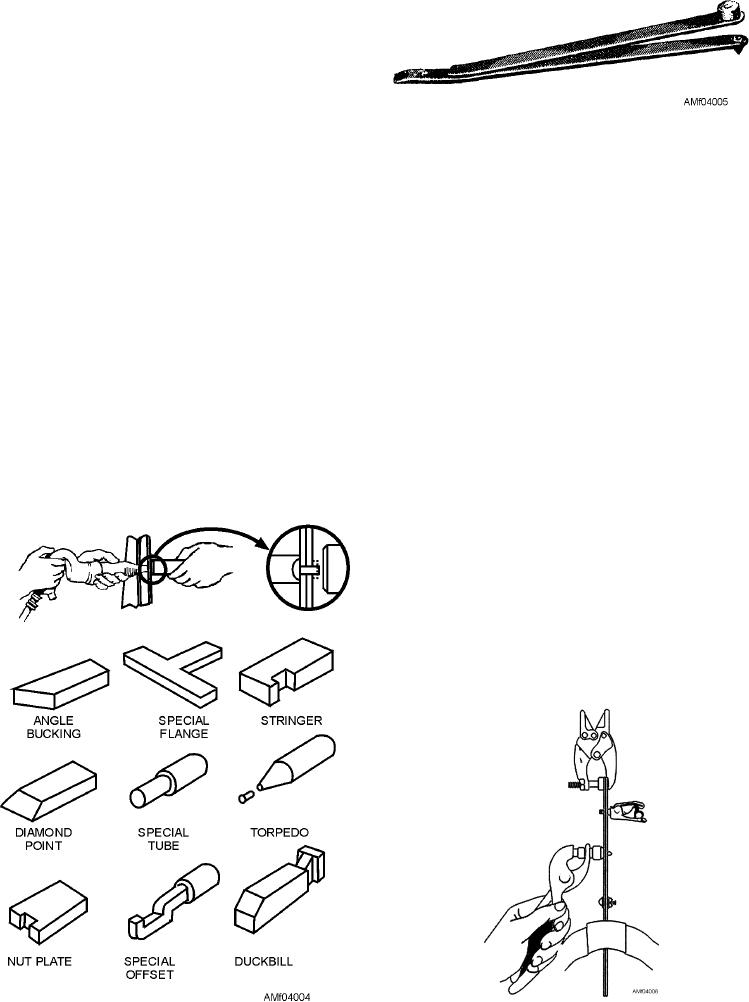
Bucking Bars
Bucking bars are tools used to form bucktails (the
head formed during riveting operations) on rivets. They
come in many different shapes and sizes, as shown in
figure 4-4. Bucking bars are normally made from an
alloy steel similar to tool steel. The particular shape to
be used depends upon the location and accessibility of
Figure 4-5.--Hole finder.
the rivet to be driven. The size and weight of the bar
but firmly against the end of the rivet shank so as not to
depend on the size and alloy of the rivet to be driven.
unseat the rivet head. The inertia of this tool provides
Under certain circumstances, and for specific rivet
the force that bucks (upsets) the rivet and forms a flat,
installations, specially designed bucking bars are
head like bucktail.
manufactured locally. These bars are normally made
from tool steel. The portion of the bar designed to come
Hole Finder
in contact with the rivet has a polished finish. This helps
to prevent marring of formed bucktails. Bucking-bar
A hole finder is a tool used to transfer existing holes
faces must be kept smooth and perfectly flat and the
in aircraft structures or skin to replacement skin or
edges and corners rounded.
patches. See figure 4-5. The tool has two leaves parallel
NOTE: Never hold a bucking bar in a vise unless
to each other and fastened together at one end. The
the vise jaws are equipped with protective covers to
bottom leaf of the hole finder has a teat installed near
prevent marring of the bucking bar.
the end of the leaf that is aligned with a bushing on the
top leaf. The desired hole to be transferred is located by
A satisfactory rivet installation depends largely on
fitting the teat on the bottom leaf of the hole finder into
the condition of the bucking bar and your ability to use
the existing rivet hole. Drilling through the bushing on
it. If possible, hold the bucking bar in such a manner
the top leaf makes the hole in the new part. If the hole
that will allow the longest portion of the bar to be in line
finder is properly made, holes drilled in this manner
with the rivet. You should hold the bucking bar lightly
will be perfectly aligned. A separate duplicator must be
provided for each diameter of rivet to be used.
Skin Fasteners
There are several types of skin fasteners used to
temporarily secure parts in position for drilling and
riveting and to prevent slipping and creeping of the
parts. C-clamps, machine screws, and Cleco fasteners
are frequently used for this purpose. See figure 4-6.
Figure 4-6.--Skin fasteners.
Figure 4-4.--Bucking bars.
4-3

